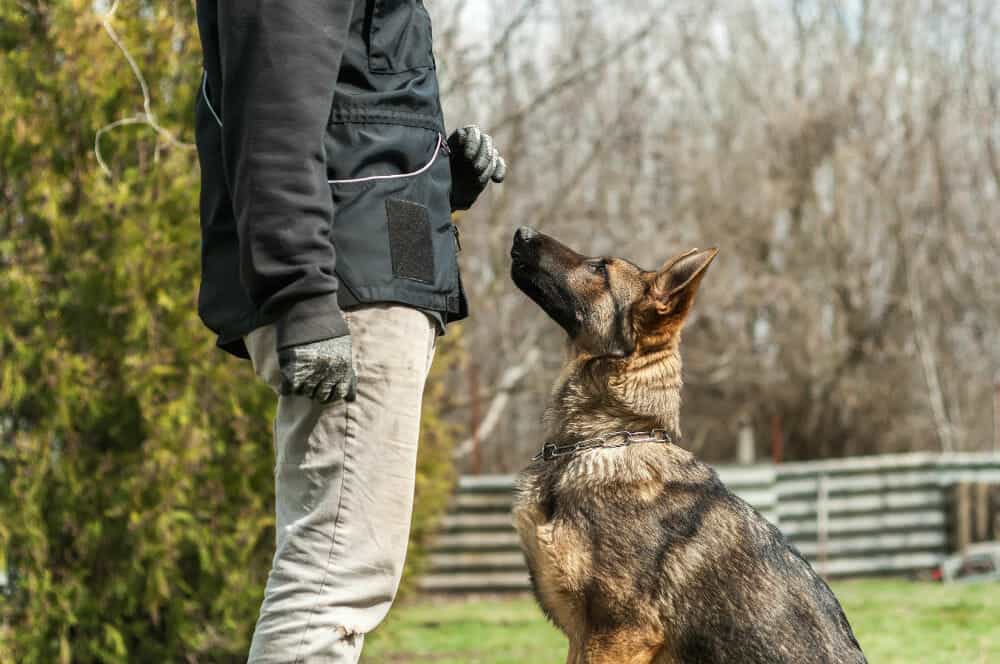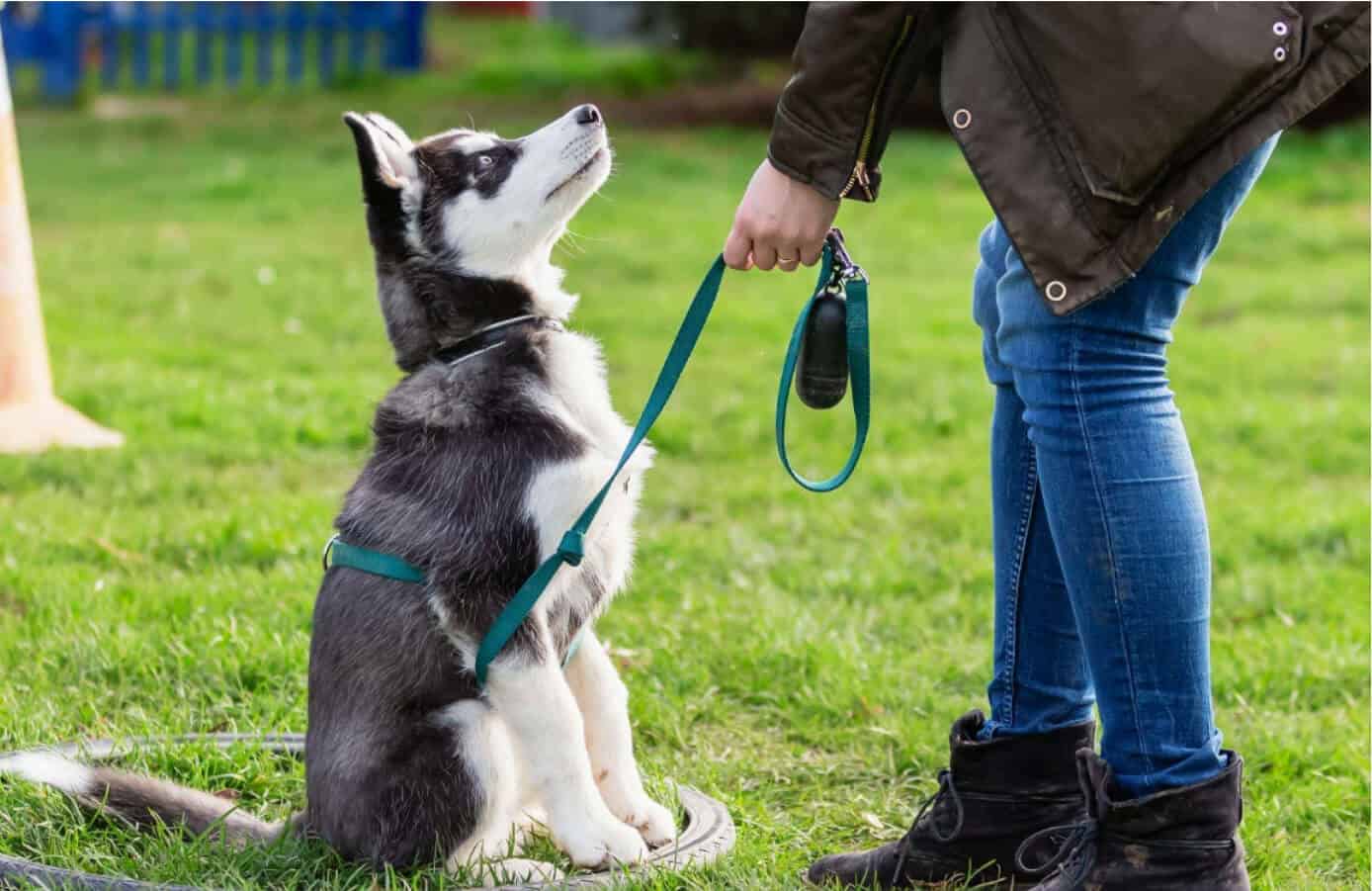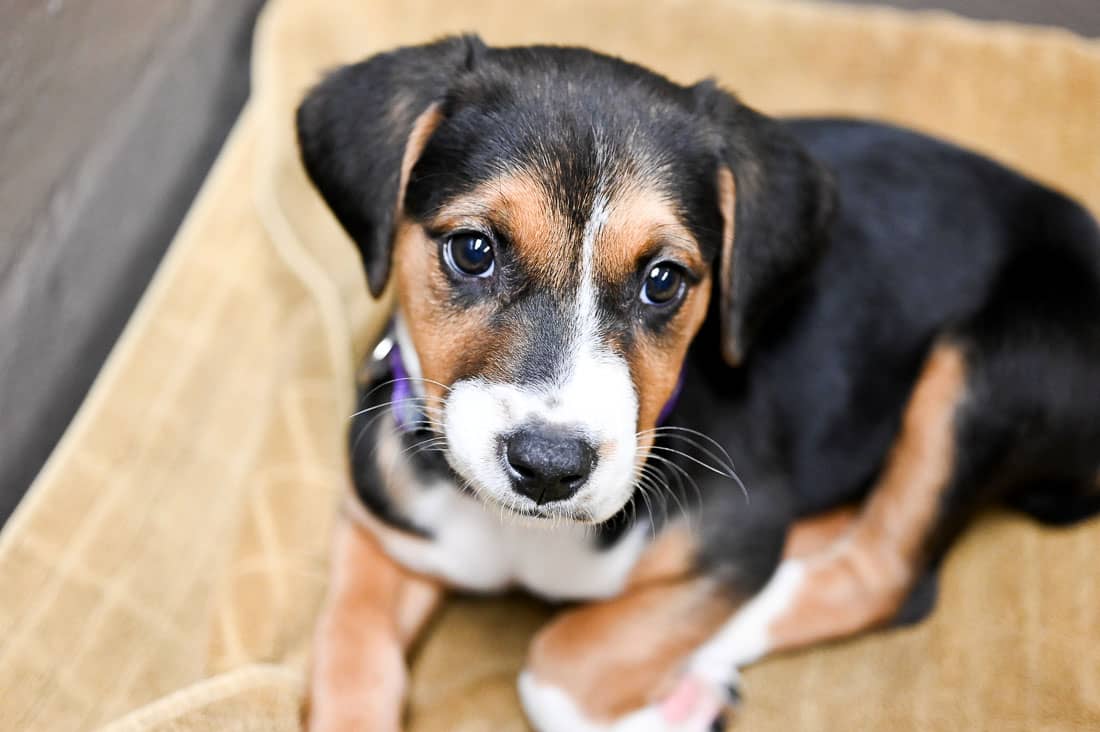The Ultimate Guide to Favorable Reinforcement in Dog Training
Wiki Article
Important Tips for Successful Dog Training: An Overview for Pet Dog Owners
Efficient canine training is a complex process that calls for a tactical strategy customized to both the family pet's temperament and the proprietor's purposes. Key parts such as establishing regular commands, using positive support, and promoting very early socializing play critical functions in cultivating a well-adjusted canine companion. Many pet dog proprietors run into obstacles that can prevent progression, leading to aggravation and unpredictability. Comprehending how to navigate these barriers can significantly boost the training experience, inevitably transforming the partnership between proprietor and dog. What are the vital approaches that can be used to ensure success in this venture?Recognizing Dog Actions
Recognizing pet behavior is crucial for efficient training and promoting a harmonious partnership in between pooches and their proprietors. dog training. Dogs interact mostly through body language, articulations, and activities, making it essential for owners to analyze these signals properly.
Socializing plays a substantial role in canine habits; direct exposure to different environments, people, and other animals can significantly impact a pet's personality. Elements such as type characteristics and specific character should lead training methods, as some types might have details behavioral attributes that demand tailored approaches. By comprehending these components, proprietors can create a supportive environment that encourages positive behavior, bring about effective training outcomes and a deeper bond with their pet dogs.
Developing Consistent Commands
Effective interaction with your pet dog starts with developing constant commands. This foundational component of training is crucial for promoting understanding between you and your pet dog. Consistency in the commands you utilize ensures that your pet dog can reliably connect specific words or expressions with the desired actions.When picking commands, select clear, distinctive words that are very easy to state and separate from each other. Prevent using similar-sounding commands that might puzzle your pet dog. Utilizing "sit" and "remain" is ideal, yet "rest" and "struck" might lead to misconceptions.
In addition, keep the same tone and quantity for every command. Dogs are sensitive to vocal hints, so varying your tone can create complication.
It is similarly vital to make sure that all family members are on the very same web page pertaining to the commands made use of. A united front in command use will prevent blended signals and reinforce the understanding process.
Favorable Support Strategies
The power of positive reinforcement in pet training exists in its ability to encourage wanted behaviors with benefits and praise. This strategy is based in the principle that habits followed by desirable results are much more most likely to be repeated. By including positive support into your training program, you can properly form your dog's actions in a positive fashion.To implement favorable reinforcement, it's vital to recognize what inspires your pet dog, whether it be treats, toys, or verbal appreciation. When your dog does a wanted action, such as resting on command, instantly award them with a reward or love. This association in between the command and the favorable result strengthens their understanding.
It's important to timing the benefits properly; providing the support within seconds of the wanted actions helps your canine make the connection (dog training). have a peek here In addition, uniformity is crucial-- make certain that all family members use the same commands and reward systems to avoid complication

Gradually, you can decrease the frequency of treats as your pet dog finds out the habits, transitioning to praise or periodic benefits. This method not just promotes a strong bond between you and your canine yet additionally promotes a favorable knowing setting, making training a pleasurable experience for both.
Socialization and Communication
Consistently exposing your canine to a variety of environments, people, and various other animals is critical for their social development. Socialization must begin early, preferably during the vital window of 3 to 14 weeks, when young puppies are most responsive to brand-new experiences. However, older pet dogs can additionally benefit from continuous socialization efforts.Introduce your pet to various setups, such as parks, pet-friendly shops, and metropolitan areas. This direct exposure helps them adapt to numerous stimulations, decreasing anxiety and anxiety responses. Urge favorable interactions with other canines and people, making certain that these experiences are secure and regulated to promote self-confidence.
Make use of organized playdates with genteel pets, as this can enhance your pet dog's social abilities and educate them appropriate actions. Obedience classes and Web Site training sessions likewise provide excellent possibilities for socializing, enabling your dog to interact with others in a supervised setting.
Display your pet dog's body language throughout interactions, as this will certainly assist you gauge their convenience degree. Slowly increase direct exposure to more difficult circumstances while guaranteeing that each experience is positive. A well-socialized canine is most likely to show balanced habits, making them a happiness to have in any kind of setting.
Addressing Typical Training Challenges
Every pet dog owner will certainly run into training difficulties at some factor, no matter their canine's age or socialization degree. Determining usual problems such as stubbornness, interruptions, and fearfulness can aid in developing reliable strategies for renovation.
Distractions during training sessions can thwart focus. To battle this, start training in a silent environment with minimal stimulations. Slowly present disturbances as the pet comes to be much more efficient in commands. Short, frequent training sessions are additionally effective in preserving attention.
Fearfulness can impede a dog's understanding process. Gradual desensitization to the view it source of worry, matched with positive reinforcement, can assist ease stress and anxiety. Patience is crucial; never force a dog right into a circumstance that causes distress, as this might worsen the concern.
Inevitably, understanding and addressing these usual challenges with a structured technique will certainly promote an extra efficient training experience, strengthening the bond in between dog and owner while advertising reliable discovering.
Final Thought
In recap, effective dog training relies upon an extensive understanding of canine behavior, the establishment of constant commands, and the application of favorable reinforcement strategies. Socialization plays a crucial function in developing well-adjusted animals, while attending to typical training difficulties needs patience and versatility. By applying these vital methods, pet proprietors can promote a strong bond with their pet dogs and advertise preferable habits, inevitably causing a harmonious partnership between human beings and their canine friends.Comprehending pet actions is crucial for effective training and fostering a harmonious connection between pooches and their proprietors.Socializing plays a significant role in canine actions; exposure to different environments, individuals, and other animals can dramatically influence a pet dog's character.The power of favorable support in pet dog training lies in its ability to motivate preferred behaviors with rewards and praise. By including positive support right into your training program, you can efficiently form your pet dog's behavior in a useful way.
In summary, effective pet dog training counts on a detailed understanding of canine habits, the establishment of constant commands, and the application of favorable reinforcement methods.
Report this wiki page